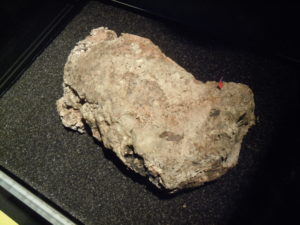Fatbergs, which are sizable masses of solid waste in a sewer system, are not something people want to think about. However, fatbergs are becoming an increasing operational and financial challenge for water utilities exacerbated by the pandemic and by lack of awareness. Limited public awareness of what can go down our kitchen sinks and toilets has led to accumulation of oil, grease, wipes, and sanitary products in drains. Over time, these products congeal, blocking pumps and pipes, and even cause sewage to back up into basements and overflow into streams.
This is no small or unique issue, instead one that is found in all corners of the world. Fatbergs can reach six feet tall and weigh as much as four humpback whales. In 2019, United Utilities, a U.K. water utility, spent four months removing a fatberg measuring 820 feet long and weighing 440 tonnes (970 thousand pounds). In May 2021, a 330-ton fatberg clogged an English sewer network for weeks. Thames Water, a U.K. water utility serving 15 million customers, reported spending £18.0m (US$28.5m) a year to remove approximately 75,000 sewer blockages.
It has been reported that municipalities in the U.S. average up to US$1.0 billion annually for pipe maintenance to remove clogs caused by flushable wet wipes, one of the culprits behind the fatberg issue compounded by the COVID-19 pandemic. While many wipes are labeled flushable, most don’t actually break down in the sewage system. Disposable PPE, single-use plastic, and especially wet wipes were the biggest causes of fatberg formations as consumers faced chaotic toilet paper shortages amid the pandemic. The city of Des Moines, Indiana, reported a 50% increase in fatberg formation since the pandemic, attributed to the improper disposal of sanitary wipes and cooking oil down sinks and drains.
The Charleston [South Carolina] Water Authority went so far as to file a lawsuit against Costco, Walmart, CVS, and four other companies that manufacture and sell “disposable” wipes after remediation costs increased by 44%, or US$110,000, at the start of the pandemic.
Policymakers are taking action
On 30 March 2022, the Wastewater Infrastructure Pollution Prevention and Environmental Safety Act (WIPPES Act) was introduced to Congress. The act would be led by the Federal Trade Commission under guidance from the Environmental Protection Agency to require certain products, like wet wipes, to include clear “Do Not Flush” labeling. It would also authorize a grant program of US$5 million to extend to local government and non-profit organization outreach efforts on proper wipe disposal methods.
The WIPPES Act addresses an issue that wastewater utilities have undergone for years, where the externalities of flushing non-flushable wet wipes have created high financial, operational, and environmental costs. Fatberg events can lead to sewer overflows and pollution runoff, which too carry a domino effect of problems. Lawsuits against flushable wipes manufacturers have risen exponentially in recent years as wastewater utilities are forced to hold the brunt of the costs for pipe recovery. Leading legislation like the WIPPES Act is the next logical step to address this issue.
Utilities are rolling out their own strategies
As media coverage on fatbergs spike Google searches on the topic, more utilities have turned to social media as part of their larger communication strategy to broaden public education on the issue and mitigate the clogging. Campaigns dubbed “flush the 3Ps” (pee, poo, paper), “Toilets Are Not Trash Cans,” “What2Flush,” “Unblocktober,” and “No Wipes in the Pipes,” as well as jingles and fatberg mascots, have been used to encourage the public to make individual changes.
Some utilities like Thames Water have also turned to fatbergs as a source of biofuel in efforts to reduce carbon emissions and meet sustainability standards. In 2021, the utility generated close to 140 million cubic meters of biogas, which was enough to cook “112 million Christmas turkeys.”
Technology has also come into play:
- GE has unveiled a robotic pipeworm to eliminate fatbergs
- Sewer level and blockage monitoring providers like SmartCover Systems, StormHarvester, and HWM’s SpillSens have been deployed to monitor sewer levels and alert for blockages
- 5G nuron fibre network trial to monitor the sewer network
- Predictive monitoring allows wastewater utilities to proactively remove growing fatbergs
The water industry has an “out of sight, out of mind” PR issue, and people rarely want to talk about wastewater. But it’s our civic duty to pay attention to what we flush down our toilets.
The water industry has an “out of sight, out of mind” PR issue, and people rarely want to talk about wastewater. But it’s our civic duty to pay attention to what we flush down our toilets. Policymakers and utilities are doing their part, but fundamentally it’s up to the public to make actionable changes. We have a lot of water infrastructure needs across the board, and we can at least minimize the fat(bergs).


